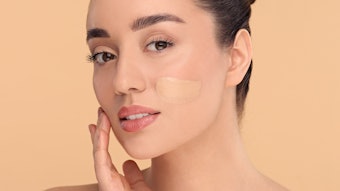For the past few years, Blue Cosmetics, or ingredients from the sea, have been moving from myth to scientific reality. This marine vegetal, otherwise known as seaweed, was mainly used in marketing efforts up until the 90s. Since then, its activity has evolved toward true effectiveness. Seaweed has since then left its micromarket and has taken part, thanks to the performance of its few molecules, in the raw materials used by the international cosmetics industry. On the whole, algal substances have converged into becoming elements in true personal care cosmetics.
Aosa Biopeptides
The aosa saweed, or Ulva lactuca, lives in the rough waters of the bays facing the Northesast side of the Bréhat Archipelago in France. The Aosa frond is made up with only two layers of cells where the plastid forms the photoenergetic centre of the seaweed. The elastic resistance of the cellular walls to the hydrostatic pressure is generated by the progression of water toward the shore or by the assault of waves which break on the rocks and drag along the Aosa. This resistance is due to the protein network of elastic fibres. The weight of water which hits the rocks can sometimes create pressures superior to 25 T/m2.
Aosa biopeptidesa are the main protein component of the elastasic fibres of the seaweed, particularly rich in proline, glycine and lysine like the elastin. Because of this likeness, Aosa biopeptides can play an important psychological part by maintaining the elasticity of the skin and by acting as an anti-wrinkle agent.










